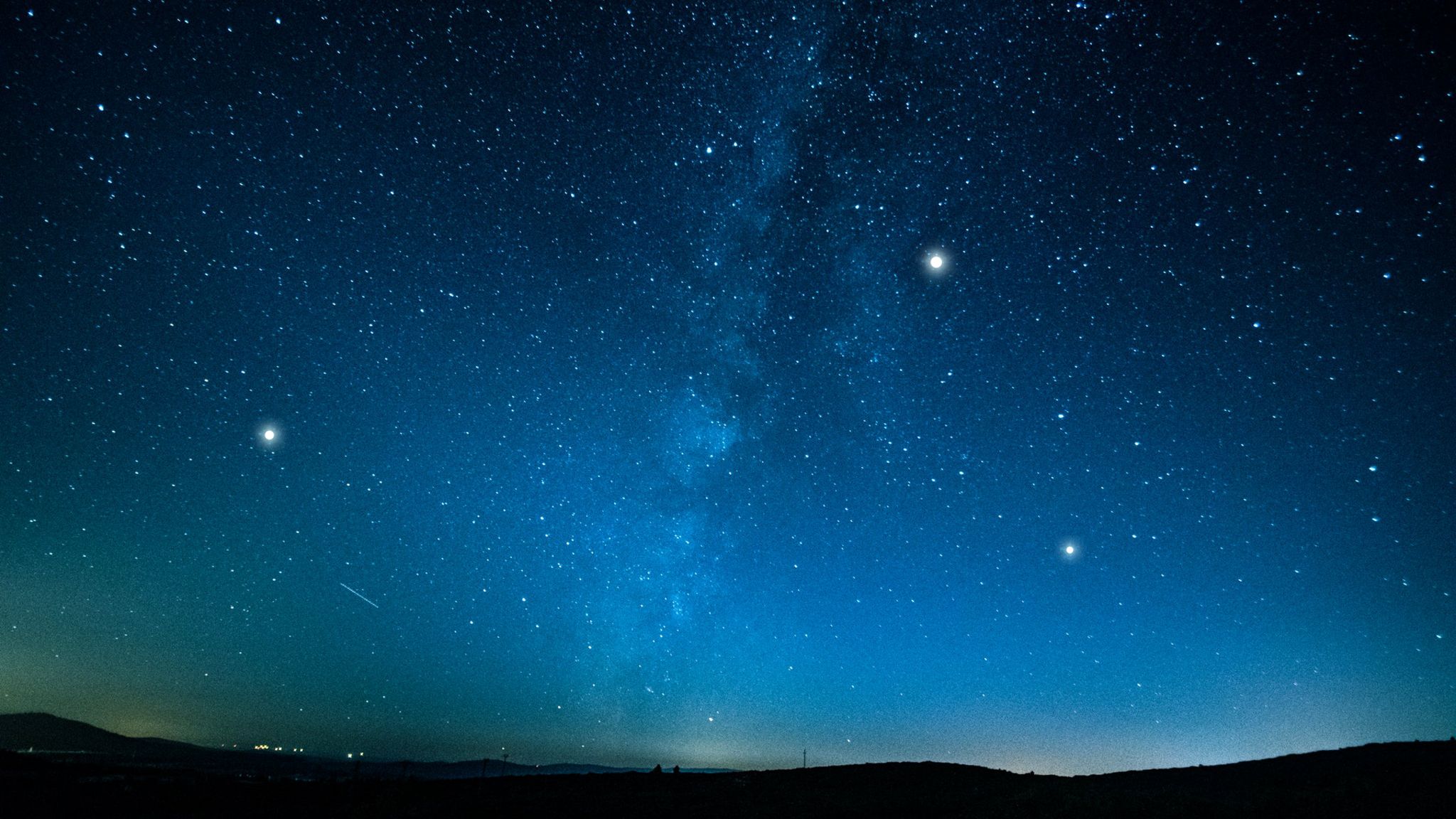Looking at the Bright Planets this Week
The moon will be out of the evening sky this week as it slides towards its meeting with the pre-dawn sun next week. Meanwhile, it’s a perfect week to explore the night sky!
Distant and dim, blue Neptune will be rising shortly after midnight local time this week. The planet will be in the southeastern pre-dawn sky, among the stars of Aquarius (the Water-Bearer).
Blue-green Uranus will be rising just after 3 am local time this week. It is sitting among the stars of Aries (the Ram) and is just a palm’s width above the head of Cetus. The large main-belt asteroid Vesta is nearby - a palm’s width below Uranus.
Venus is bright enough to see within the pre-dawn twilight sky that surrounds it, but it is sitting very low in the northeast - sinking ever-closer to the rising sun. Venus will be rising at about 4:40 am local time all week.
We are still near our closest approach to Jupiter for 2019, increasing its apparent brightness and the size of its banded disk and moons in binoculars and telescopes. This week the planet will be rising at about 7:30 am local time, before sunset.
From time to time, the small, round black shadows cast by Jupiter’s four Galilean moons become visible in amateur telescopes as they cross (or transit) Jupiter’s disk. Starting at about 2 am EDT on Wednesday morning, Io and its shadow will cross Jupiter for more than two hours. Io’s shadow will also be completing a transit (with the Great Red Spot) just before 11 pm EDT on Thursday evening, so you can start to look for that as soon as the sky darkens. On Saturday morning, Europa and its shadow will cross Jupiter for two hours (with the Great Red Spot), starting at about 2:40 am EDT. Jupiter will set while they are crossing.
Yellowish Saturn will be rising in the east-southeast just before 10 pm local time this week near the stars of Sagittarius (the Archer). Saturn is quite a bit dimmer than Jupiter. To find it, look about 3 fist diameters to the lower left (east) of Jupiter. Once the sky is dark, even a small telescope will show Saturn's rings and several of its brighter moons, especially Titan.
Dim, reddish Mars and brighter Mercury are still hanging out together just above the northwestern horizon after sunset this week, but not as close together as last week.
Our Star Walk 2 app will help you identify any celestial object in the sky based on your location and keep you up to date with the latest astronomical news.
Keep looking up and enjoy the sky!


